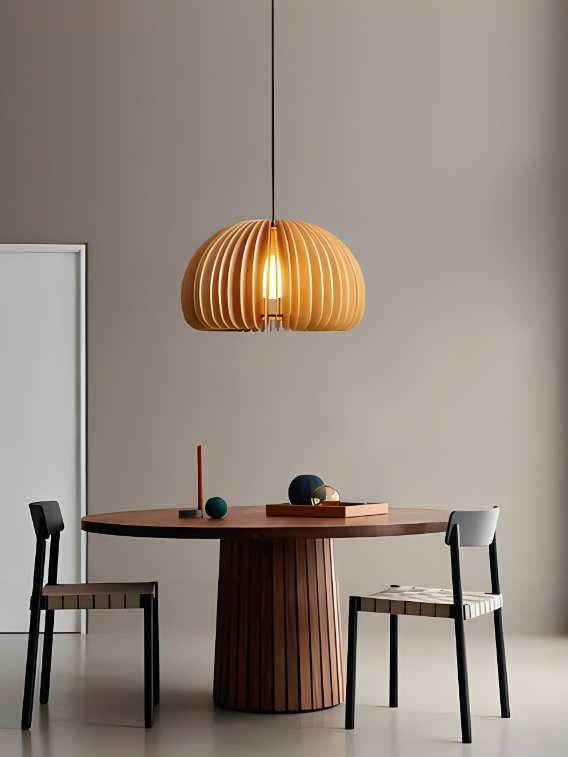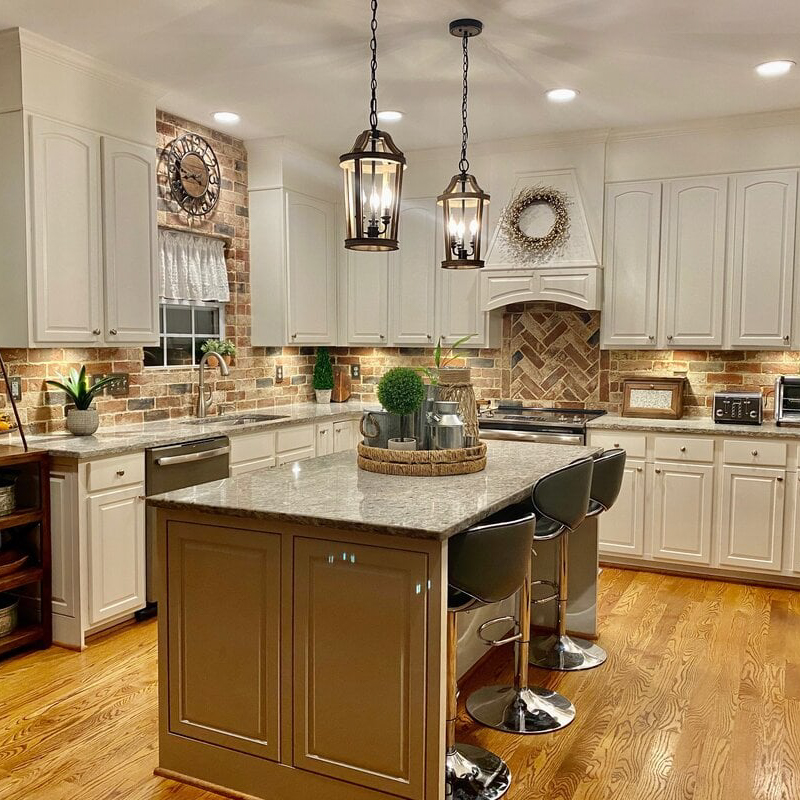Chandeliers have a rich and fascinating history that dates back to medieval times. The word “chandelier” is derived from the French word “chandelle,” which means candle. In the early days, chandeliers were simply wooden crosses with spikes to hold candles. They were used to illuminate large rooms and halls in castles and churches. As time progressed, chandeliers evolved into more elaborate designs, incorporating metalwork and glass to hold the candles. The 15th century saw the introduction of the first crystal chandeliers, which were a symbol of wealth and luxury. These chandeliers were adorned with intricate crystal prisms that reflected the candlelight, creating a dazzling display of light and shadow.
During the 18th century, chandeliers reached the height of their popularity in Europe, particularly in France and Italy. The designs became more ornate and extravagant, featuring intricate metalwork and a profusion of crystals. Chandeliers were no longer just a source of light; they became a status symbol, adorning the grandest palaces and mansions of the aristocracy. With the advent of gas lighting in the 19th century, chandeliers were adapted to accommodate gas jets, further enhancing their luminosity. The invention of electricity in the late 19th century revolutionized chandelier design, allowing for the use of electric bulbs and the creation of even more elaborate and opulent chandeliers. Today, chandeliers continue to be a symbol of elegance and sophistication, with modern designs incorporating innovative materials and technology to create stunning lighting fixtures that are both functional and decorative.
The Impact of Chandeliers on Interior Design
Chandeliers have a profound impact on interior design, serving as the focal point of a room and adding a touch of glamour and luxury. A well-chosen Mergelighting chandelier can transform the ambiance of a space, creating a sense of grandeur and sophistication. Whether it’s a traditional crystal chandelier in a formal dining room or a sleek, modern chandelier in a contemporary living room, these lighting fixtures have the power to elevate the overall aesthetic of any interior. Chandeliers also play a crucial role in setting the mood and atmosphere of a room. The soft, warm glow emitted by a chandelier creates an inviting and intimate ambiance, making it an ideal choice for spaces where people gather and socialize.
In addition to their aesthetic appeal, chandeliers also serve a functional purpose in interior design. They provide ambient lighting that illuminates the entire room, eliminating dark corners and creating a well-lit environment. This makes chandeliers an essential element in both residential and commercial spaces, where adequate lighting is necessary for comfort and functionality. Furthermore, chandeliers can be used to define specific areas within a room, such as a dining area or a seating arrangement, adding visual interest and structure to the space. With their ability to make a bold statement and enhance the overall design scheme, chandeliers are an indispensable element in interior design that can truly elevate the look and feel of any space.
The Different Styles of Chandeliers: Traditional, Modern, and Transitional
Chandeliers come in a wide variety of styles, each with its own unique characteristics and design elements. Traditional chandeliers are characterized by their ornate details, intricate metalwork, and abundance of crystals or glass ornaments. These chandeliers often feature classic shapes such as tiered arms or curved branches, exuding an air of elegance and opulence. Traditional chandeliers are well-suited for formal spaces such as dining rooms, foyers, and ballrooms, where they can make a grand statement and add a touch of old-world charm.
On the other end of the spectrum are modern chandeliers, which are defined by their sleek lines, minimalist design, and use of innovative materials such as metal, glass, or even unconventional materials like wood or plastic. Modern chandeliers often feature geometric shapes or asymmetrical designs, reflecting contemporary aesthetics and trends. These chandeliers are ideal for spaces with a more streamlined and minimalist decor, such as modern living rooms, kitchens, or offices, where they can serve as a striking focal point without overwhelming the space.
For those who appreciate the best of both worlds, transitional chandeliers offer a perfect blend of traditional elegance and modern simplicity. These chandeliers combine classic design elements with clean lines and understated details, creating a versatile lighting fixture that can complement a wide range of interior styles. Transitional chandeliers are well-suited for spaces that require a balance between traditional and contemporary aesthetics, such as transitional living rooms, bedrooms, or dining areas.
How to Choose the Right Chandelier for Your Space
Choosing the right chandelier for your space involves considering several key factors such as the size of the room, the height of the ceiling, the overall design style, and the intended use of the space. When selecting a chandelier for a specific room, it’s important to take into account the scale and proportion of the fixture in relation to the size of the room. A large, elaborate chandelier may overwhelm a small room, while a small chandelier may get lost in a large space. It’s essential to strike a balance between the size of the chandelier and the dimensions of the room to ensure that it complements the space without overpowering it.
The height of the ceiling also plays a crucial role in choosing the right chandelier. Rooms with high ceilings can accommodate larger and more elaborate chandeliers, while rooms with lower ceilings require more compact and streamlined fixtures to avoid creating a cramped or crowded look. Additionally, it’s important to consider the overall design style of the space when selecting a chandelier. Traditional spaces call for ornate and decorative chandeliers that complement the classic decor, while modern spaces benefit from sleek and minimalist designs that align with contemporary aesthetics.
Finally, it’s essential to consider the intended use of the space when choosing a chandelier. For example, a dining room may require a chandelier that provides ample task lighting for mealtime while also creating an inviting ambiance for entertaining guests. On the other hand, a foyer may benefit from a grand and eye-catching chandelier that sets the tone for the rest of the home. By taking these factors into consideration, you can select a chandelier that not only enhances the aesthetic appeal of your space but also fulfills its practical lighting needs.
The Art of Installing and Maintaining a Chandelier
Installing and maintaining a chandelier requires careful attention to detail and proper technique to ensure its safety and longevity. Before installing a chandelier, it’s crucial to consult with a professional electrician to assess the electrical wiring and determine if any modifications are needed to support the weight and power requirements of the fixture. Once the electrical work is completed, it’s time to install the mounting hardware and secure the chandelier in place. This process requires precision and expertise to ensure that the chandelier is properly balanced and securely attached to the ceiling.
After installation, regular maintenance is essential to keep your chandelier looking its best and functioning properly. Dusting and cleaning are important tasks that help preserve the beauty of the fixture and prevent dirt and grime from accumulating on its surfaces. Depending on the material and design of your chandelier, you may need to use specific cleaning products or techniques to avoid damaging delicate components such as crystals or glass ornaments. Additionally, it’s important to inspect the electrical components of the chandelier periodically to ensure that all connections are secure and there are no signs of wear or damage.
In some cases, professional maintenance may be necessary to address more complex issues such as rewiring or replacing damaged parts. By investing time and effort into proper installation and maintenance practices, you can ensure that your chandelier remains in pristine condition and continues to illuminate your space with beauty and elegance for years to come.
Chandeliers as Statement Pieces: Adding Glamour to Any Room

Chandeliers have long been revered as statement pieces that add glamour and sophistication to any room. Whether it’s an ornate crystal chandelier in a grand ballroom or a sleek modern fixture in a contemporary living room, these lighting fixtures have the power to captivate attention and elevate the overall aesthetic of a space. A well-chosen chandelier serves as a focal point that draws the eye upward, creating a sense of drama and elegance that instantly transforms the ambiance of a room.
In addition to their visual impact, chandeliers also contribute to the overall atmosphere of a space by providing soft, ambient lighting that creates an inviting and intimate environment. The warm glow emitted by a chandelier enhances the mood of any room, making it an ideal choice for spaces where people gather and socialize. Whether it’s illuminating a formal dining area or adding warmth to a cozy bedroom, chandeliers play an essential role in setting the tone for various activities within a home or commercial space.
Furthermore, chandeliers offer endless opportunities for personal expression and creativity in interior design. With an array of styles, materials, and designs to choose from, you can select a chandelier that reflects your unique taste and complements your decor scheme. Whether you prefer traditional elegance or contemporary minimalism, there is a chandelier out there that can serve as an exquisite statement piece in your space.
The Future of Chandeliers: Innovative Designs and Sustainable Materials
As technology continues to advance and environmental consciousness grows, the future of chandeliers is poised for innovative designs and sustainable materials. Modern advancements in lighting technology have led to the development of energy-efficient LED bulbs that consume less energy while providing ample illumination. This has opened up new possibilities for creative lighting designs that integrate LED technology into chandeliers, offering both functionality and eco-friendliness.
In addition to energy-efficient lighting solutions, sustainable materials are becoming increasingly popular in chandelier design. With an emphasis on environmental responsibility, designers are exploring alternative materials such as recycled glass, reclaimed wood, or eco-friendly metals to create stunning lighting fixtures that minimize their impact on the planet. These sustainable materials not only contribute to reducing waste but also add an element of uniqueness and character to chandeliers, making them even more appealing to environmentally conscious consumers.
Furthermore, innovative designs are pushing the boundaries of traditional chandelier aesthetics by incorporating cutting-edge materials such as 3D-printed components or interactive lighting features that respond to user input or environmental conditions. These forward-thinking designs offer new ways to experience and interact with lighting fixtures while pushing the boundaries of creativity in interior design.
In conclusion, chandeliers have come a long way from their humble beginnings as simple candle holders to becoming iconic symbols of elegance and luxury in interior design. With their rich history, diverse styles, and timeless appeal, chandeliers continue to captivate our imagination and inspire innovative designs that shape the future of lighting fixtures in homes and commercial spaces alike. As technology evolves and sustainability becomes increasingly important, we can expect to see even more exciting developments in chandelier design that embrace innovation while honoring their timeless allure.




